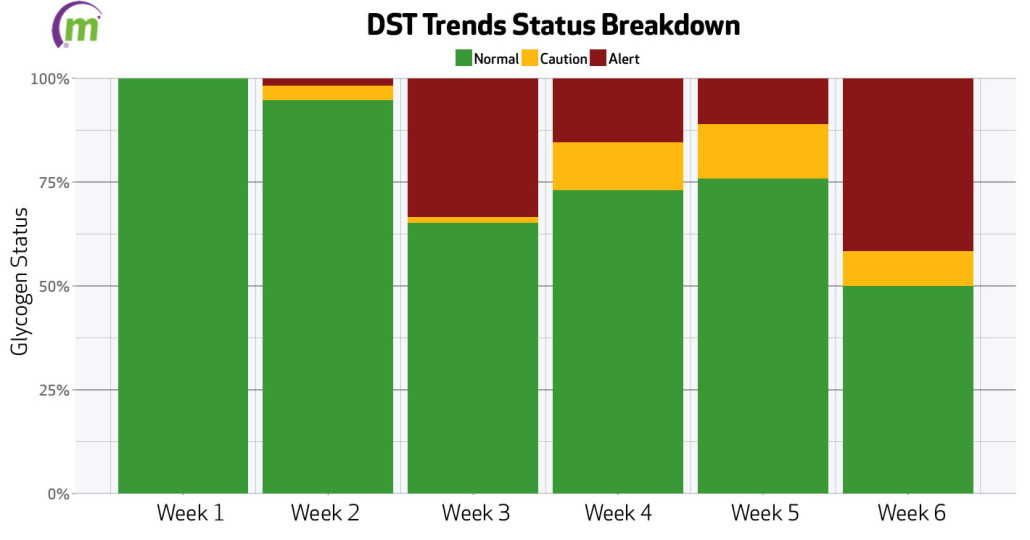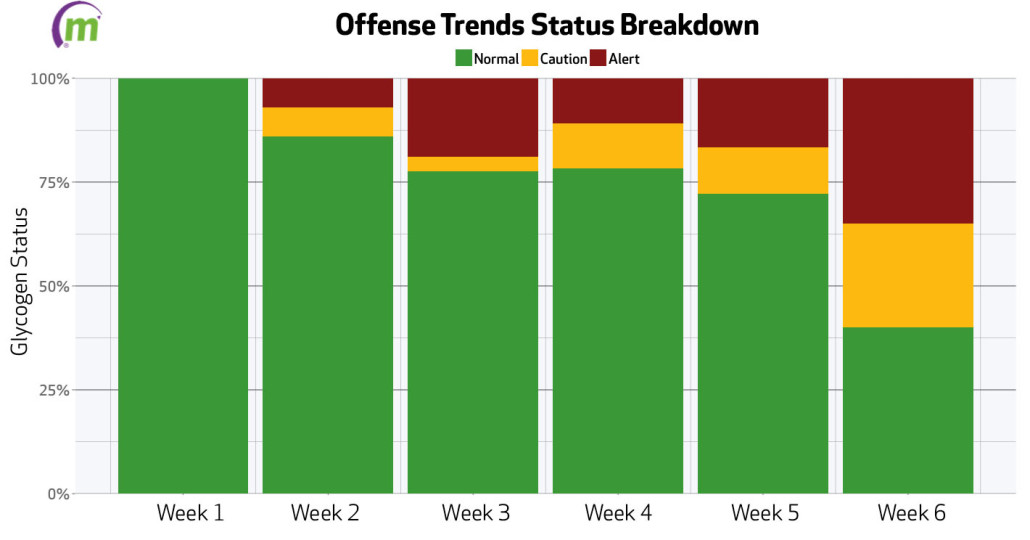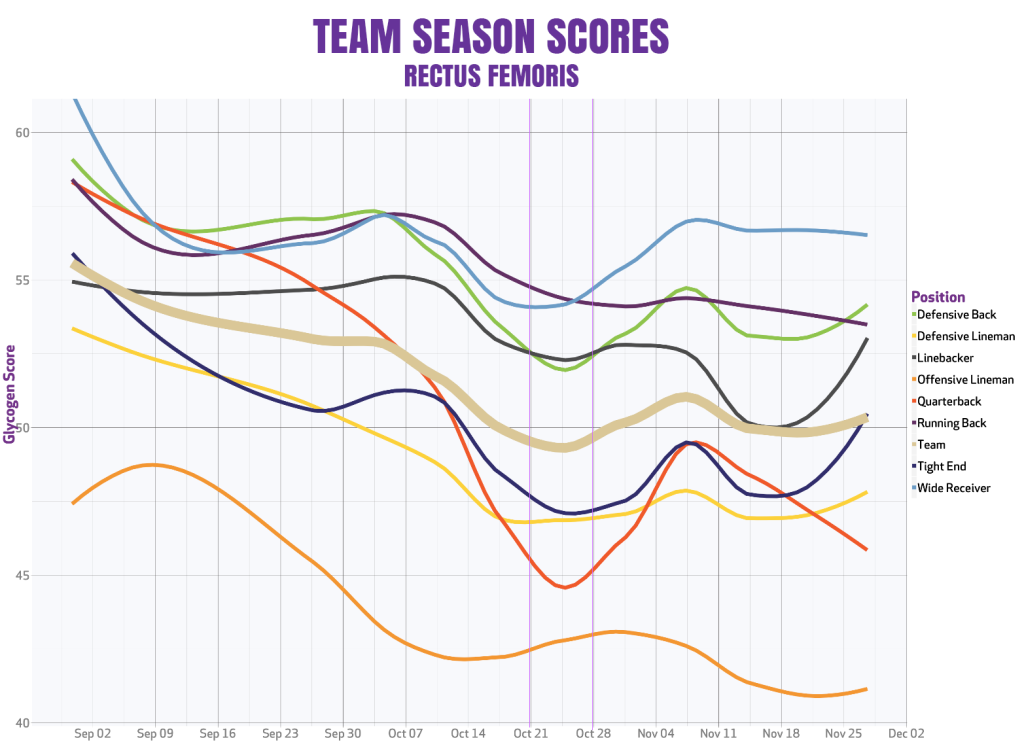MuscleSound® worked with an NCAA FBS (Division I-A) football teams to collect ultrasound-derived Muscle Fuel data in the rectus femoris and lateral gastrocnemius throughout the season. Ultrasound scans were performed on Thursdays and Sundays on the great majority of the travel squad (average of 62 players scanned each Thursday, 78 on Sunday). Given that the skeletal muscle damage that often accompanies braking, landings, sudden changes in direction, and resistance training can impair fuel resynthesis, scans were performed on Thursdays and Sundays to gain insight into how players were responding to the loading from the week of practice and Saturday’s game, respectively.


From the graphs above, the players did not have academic classes during Week 1-5. However, Week 6 marks the first week of school as the University is on a quarter schedule. These scans were taken on a weekly basis on Thursdays as it marked the end of physically demanding preparations for the weekend game. As can be seen in both the Defense/Special Teams and Offense Season Trends Status charts, there were significantly higher yellow and red status percentages, indicating lower relative glycogen scores, on the Thursday of the first week of school. Over the course of the season, the entire team experienced a downward trend in their glycogen scores during practice weeks. In particular, defensive linemen and linebackers showed extreme caution and alert statuses throughout the season. In addition, the team saw declining spikes in accordance to travel games, indicating that travel had a clear significant negative impact on the teams’ susceptibility to injury, where the irregularities of sleep patterns and nutrition were most present. Furthermore, practice weeks leading up to games against top teams in conference had a huge negative impact on glycogen scores, thus a decrease in the ability for peak performance and an increase in the susceptibility to injury. Finally, MuscleSound found that altitude had a clear negative impact on glycogen scores. This variance was seen during the high altitude game, as every game except for that game was played within 100 feet of sea level. Practice demands were to be monitored and altered according to the MuscleSound test results next season to reverse these negative effects.
In a separate study with a NCAA FBS (Division I-A) football team, the lowest average glycogen score throughout the season in the rectus femoris (scans were obtained on Thursdays, average of 56 players scanned each week) coincided with mid-term examinations during week 7.

MuscleSound found that the whole team experienced a decline in their glycogen content throughout the season. The lowest team average coincided with mid-term examinations, where mental strains and poor eating choices during that time led the athletes to be most vulnerable to soft tissue injury. The chart above breaks the team’s glycogen levels down by positional group, showing the declining trend throughout the entire team. Consistent MuscleSound testing was necessary to ensure diligence of nutritional intake pre, during, and post-training and competition for injury prevention. These trends were flagged for the following year, as nutrition, training, and recovery should be directly dependent to the team’s glycogen scores.
Based on these findings, it appears that it is especially important to monitor glycogen during periods of unaccustomed stress, such as school schedule changes, life changes (births, deaths, marriage, etc.), changes in game schedules or training demands, and periods of increased mental demands, such as mid-term examinations. These findings can then be used on an individual, position group, and/or team-wide basis to adjust practice, nutrition, and training plans accordingly.
